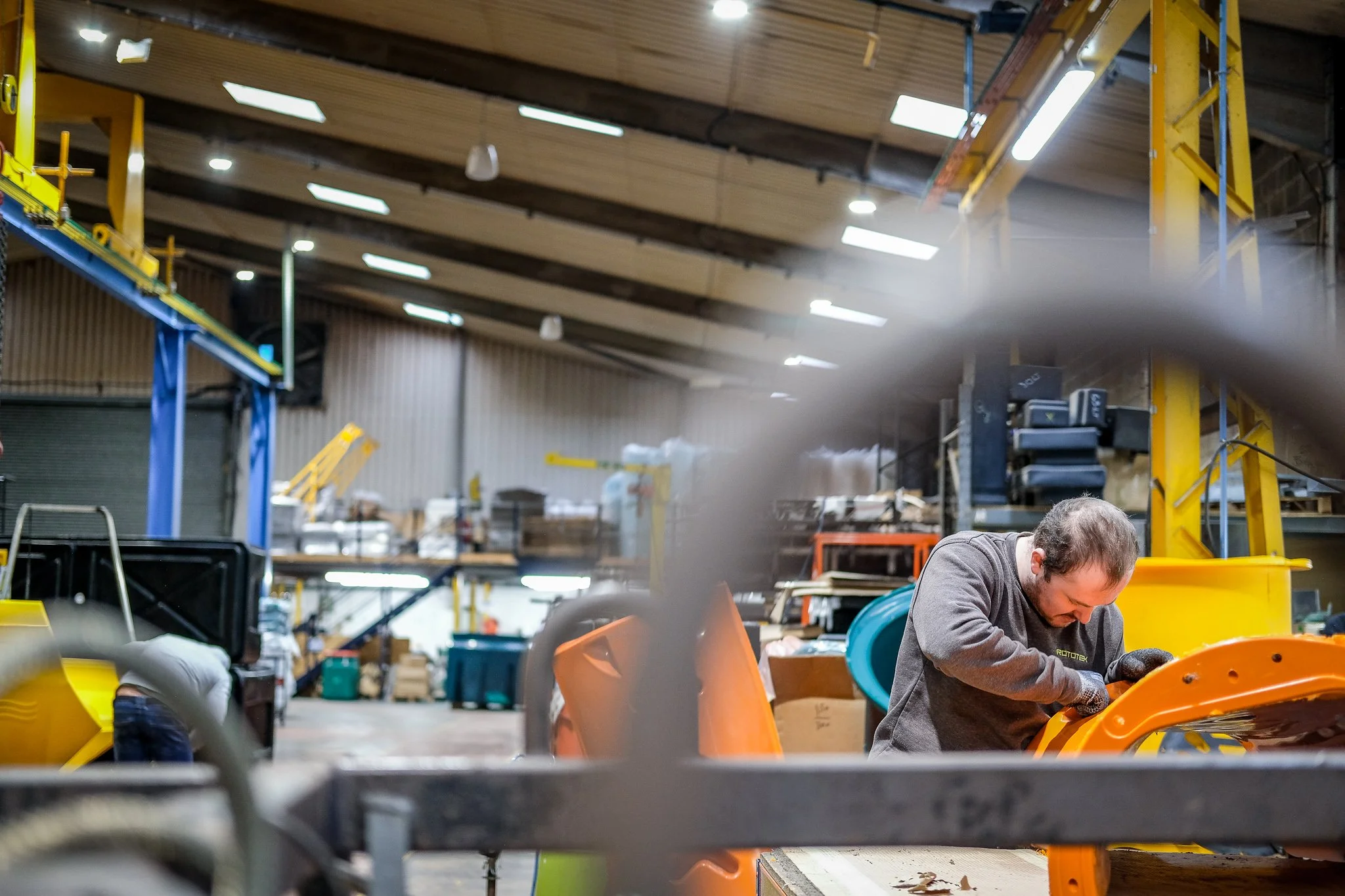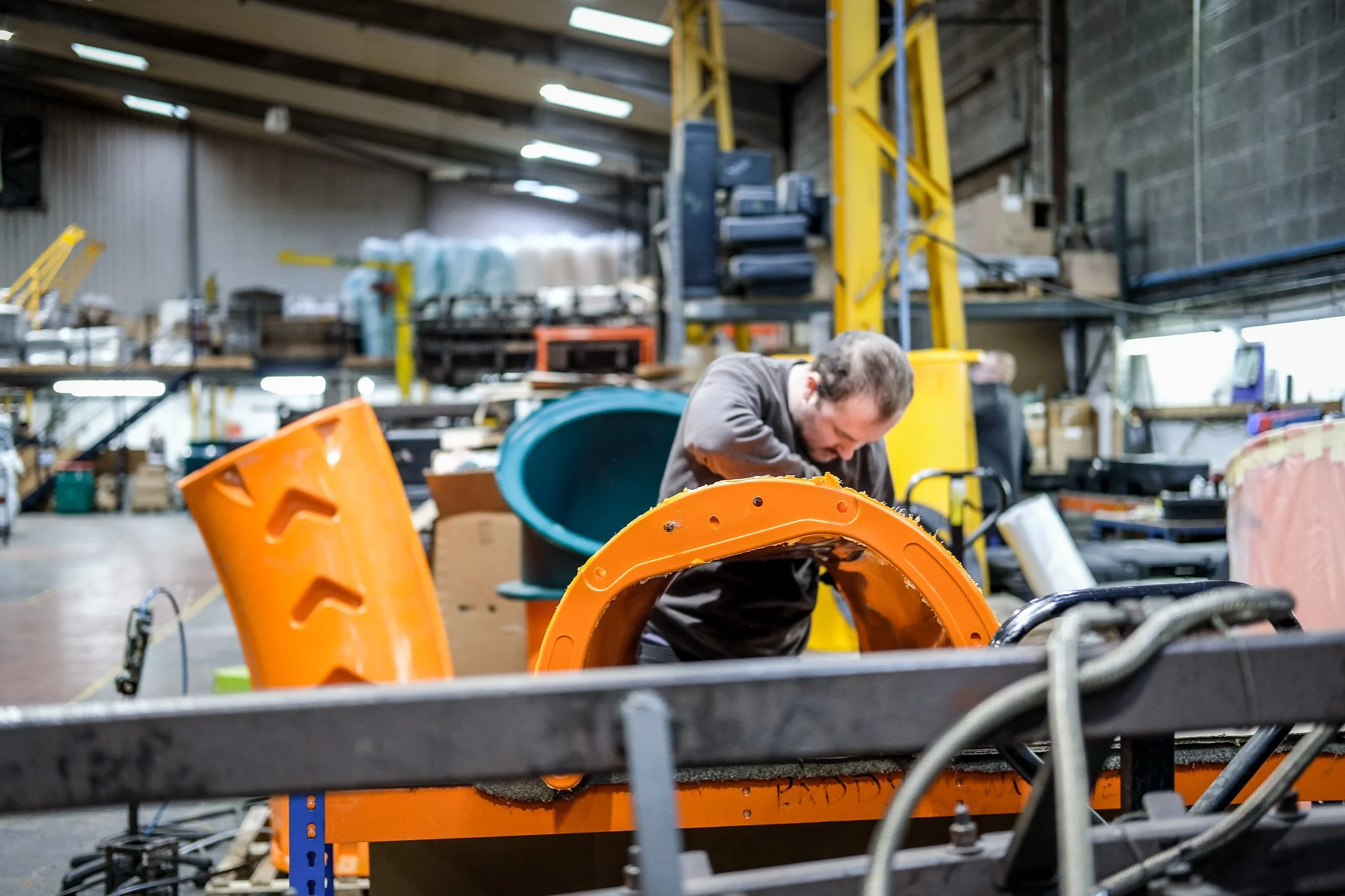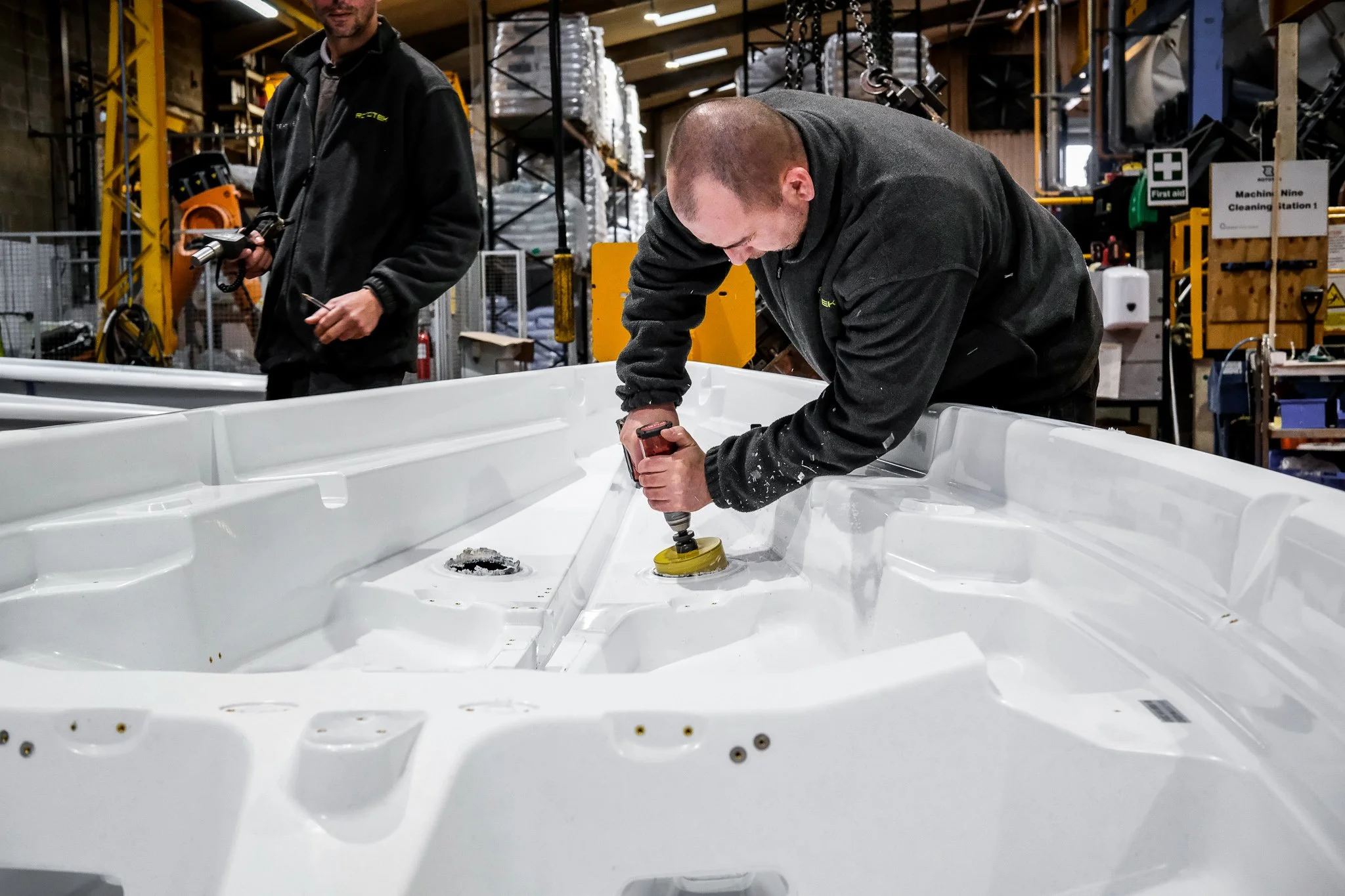
GRP vs Rotational Moulding
When it comes to choosing the right manufacturing process for plastic products, two options often come up: GRP moulding (Glass Reinforced Plastic) and rotational moulding. Both can produce large, durable parts, but they suit very different needs. This guide outlines the differences so you can make the right call for your project.
THE GRP MOULDING PROCESS
Glass Reinforced Plastic (GRP) is made by layering sheets of glass fibre with resin inside a mould. Each layer is normally applied by hand, shaped and left to cure before the next goes on. The whole thing then needs time to cure, sometimes hours, depending on the resin system and ambient temperature. Once cured, there's usually trimming, drilling, and finishing work to get the part ready.
Rotational moulding is ideal for small and large, hollow products that might need strength, durability and resistance to the elements. A powdered plastic polymer is loaded into a mould, then heated and rotated. As the mould turns on two axes and heats up, the polymer melts and evenly coats the inside surface of the mould, ensuring consistent wall thickness even in complex shapes. The mould is then cooled while it's still rotating, and the plastic part comes out as a seamless, hollow component. The beauty is in the simplicity: gravity, heat, and the rotations do most of the work, which means consistent results part after part.

THE DIFFERENCES BETWEEN GRP VS. ROTATIONAL MOULDING
GRP moulding and rotomoulding are often compared because they both produce strong, custom plastic parts, but the way they get there is very different. Understanding the differences between each process helps you match the right method to your project from the start.
COST CONSIDERATIONS: TOOLING VS. COST PER-UNIT
GRP tooling is less expensive upfront because the moulds don’t need to withstand high temperatures or continuous rotation. But it’s slow, labour-intensive work, and the results are tied to the operator’s skill. GRP moulding’s manual approach works well for one-offs or very small runs because the tooling is relatively simple and inexpensive. As soon as production ramps up, though, those savings disappear. You’re also looking at an average production volume of one part per day versus one part per hour with rotational moulding.
While rotational moulding tooling costs more upfront, the per-unit cost quickly levels out, and higher volumes are far easier to achieve. The manual nature of GRP also means higher labour costs per part and potential consistency issues. Every part depends on the skill and attention of the operator. Rotomoulding is largely automated once the cycle starts, which keeps per-unit costs predictable.
If you're planning a small batch or prototype run, GRP's lower tooling costs will make sense for your project, but if there's any chance your manufacturing needs will scale up, rotational moulding will work out to be more cost-effective than GRP moulding.
COMPARING STRENGTH, DURABILITY & MATERIAL PERFORMANCE
GRP gets its strength from the combination of glass fibres and resin matrix. It has excellent tensile and flexural strength, and can handle significant loads, which is why you’ll see GRP in boat hulls and architectural panels where structural performance matters more than impact resistance. Rotomoulded products are also tough, but in a different way. They absorb impact energy rather than transferring it through the structure. GRP’s main weakness is brittleness. GRP parts will shatter under impact or develop stress cracks, making it less suited to heavy-duty, high-wear applications.
Both GRP and rotational moulding produce parts that are resistant to corrosion, chemicals, and UV exposure, so both work well in chemical processing equipment and marine environments where metals would deteriorate.
DESIGN FLEXIBILITY AND SURFACE FINISH
GRP and rotomoulding each bring different strengths to the table. GRP moulding is highly adaptable in terms of shape because it’s built up by hand, layer by layer. This makes it a good choice for one-off designs or asymmetrical parts where external form takes priority. Skilled fabricators can also achieve premium finishes with custom textures, gelcoats, and colour options, but this level of cosmetic detail is less practical for higher volumes. The downside is that it's labour-intensive and depends entirely on operator skill – what one person can achieve might not be repeatable by another.
Rotational moulding is best at producing hollow, seamless parts. Complex external geometries and integrated features like mounting bosses or reinforcing ribs are all possible in a single rotomoulded part, whereas GRP requires separate operations and assembly for similar features. Rotomoulding also delivers consistent wall thickness, where GRP parts can be thicker in corners and can have thin spots where the lay-up wasn't perfect. While surface finish is limited by the mould itself, modern tooling can deliver clean, consistent results run after run – every part that comes out of the mould looks identical.
Rotational moulding leans toward functional, hard-wearing finishes. In short: GRP moulding gives more freedom on the outside, while rotomoulding excels at repeatable, enclosed shapes built at scale. GRP can achieve smoother finishes and finer detail, but rotomoulding doesn't require the secondary operations that GRP often needs.
PRODUCTION SPEED AND VOLUME
Speed is where GRP falls short. The hand lay-up process, cure times, manual labour requirement, and finishing work mean you're potentially looking at one part per day. Rotational moulding cycles can take 1-2 hours per cycle, depending on the size and complexity of the part, with multiple parts possible per day from a single mould.

PROJECT APPLICATIONS: GRP VS. ROTATIONAL MOULDING
Choose GRP moulding for:
Prototype and low-volume work: The tooling cost advantage matters when you're only making a few parts.
Highly detailed surfaces: When you need fine surface detail or very smooth finishes.
Strength requirements: Applications where brittleness isn't a concern but maximum tensile strength is essential.
Large, thin-walled parts: Where weight is critical and the part won't see impact loads.
Choose rotomoulding for:
Higher-volume production: Once you're past prototype quantities, the speed advantage matters.
Complex hollow shapes: Anything requiring external features or uniform wall thickness.
Tanks and containers: The seamless construction eliminates leak paths.
Impact-prone environments: Ideal for playgrounds, marine applications and material handling equipment.
Chemical exposure: We can select materials specifically for your chemical environment.
DISCUSS YOUR NEXT PROJECT WITH ROTOTEK
Choosing between GRP moulding and rotational moulding is about what’s better for your project. If you’re working with low volumes and prioritising surface finish over production speed, GRP could serve you well. If you need durable plastic parts and reliable performance in harsh environments, rotomoulding is usually the more practical solution. If there's any chance your project will scale beyond prototype quantities, it's worth evaluating rotational moulding from the start.
At Rototek, we specialise in turning simple and complex design requirements into finished products ready for end customers. If you want to explore what’s possible, our team is here to help. Get in touch and let's talk through your project needs.
